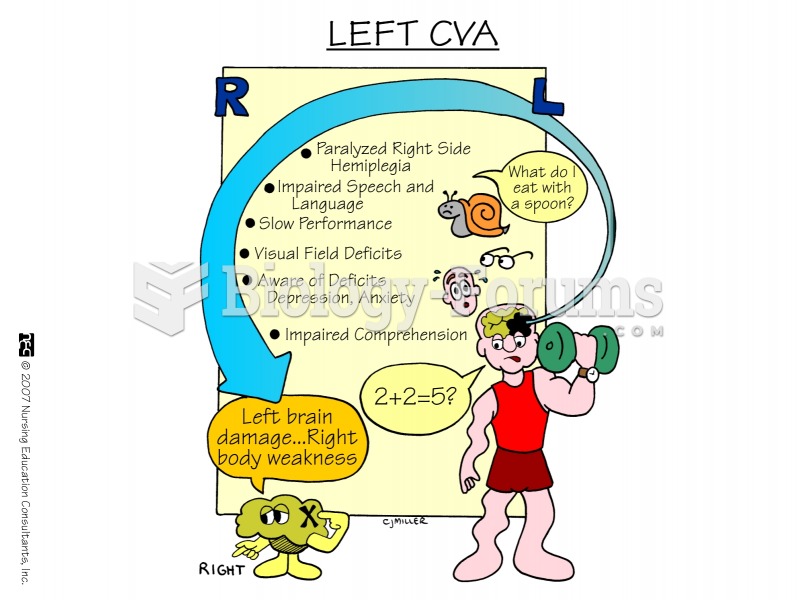Answer to Question 1
Correct Answer: 3
Rationale 1: Valproic acid (Depakote) is incorrect because valproic acid is used for absence and mixed generalized types of seizures.
Rationale 2: Gabapentin (Neurontin) is incorrect because gabapentin is used for partial seizures or generalized seizures.
Rationale 3: Lorazepam (Ativan), a benzodiazepine, intensifies the effect of GABA in the brain. It binds directly to the GABA receptor, suppressing abnormal neuronal foci. Benzodiazepines also treat anxiety, skeletal muscle spasms, and alcohol withdrawal symptoms (which begin six hours after withdrawal of alcohol), all of which might be occurring with this accident victim.
Rationale 4: Phenytoin (Dilantin) is incorrect because phenytoin is used to control tonic-clonic and psychomotor seizures, and seizures that occur after head trauma.
Global Rationale: Lorazepam (Ativan), a benzodiazepine, intensifies the effect of GABA in the brain. It binds directly to the GABA receptor, suppressing abnormal neuronal foci. Benzodiazepines also treat anxiety, skeletal muscle spasms, and alcohol withdrawal symptoms (which begin six hours after withdrawal of alcohol), all which might be occurring with this accident victim. Valproic acid (Depakote) is incorrect because valproic acid is used for absence and mixed generalized types of seizures. Gabapentin (Neurontin) is incorrect because gabapentin is used for partial seizures or generalized seizures. Phenytoin (Dilantin) is incorrect because phenytoin is used to control tonic-clonic and psychomotor seizures, and seizures that occur after head trauma.
Answer to Question 2
Correct Answer: 1
Rationale 1: Carbamezepine (Tegretol), a phenytoin-like drug that leaves sodium channels unblocked, allowing action potential but making it less sensitive to excessive neuronal activity, is the drug of choice for tonic-clonic and partial seizures because it produces fewer adverse effects than does phenytoin or phenobarbital.
Rationale 2: Valproic acid (Depakote) is incorrect because valproic acid is the drug of choice for absence seizures.
Rationale 3: Zonisamide (Zonegran) is incorrect because zonisamide is a newer drug for partial seizures.
Rationale 4: Phenytoin (Dilantin) is incorrect because there are more side effects with phenytoin.
Global Rationale: Carbamezepine (Tegretol), a phenytoin-like drug that leaves sodium channels unblocked, allowing action potential but making it less sensitive to excessive neuronal activity, is the drug of choice for tonic-clonic and partial seizures because it produces fewer adverse effects than does phenytoin or phenobarbital. Valproic acid (Depakote) is incorrect because valproic acid is the drug of choice for absence seizures. Zonisamide (Zonegran) is incorrect because zonisamide is a newer drug for partial seizures. Phenytoin (Dilantin) is incorrect because there are more side effects with phenytoin.







